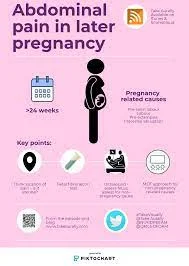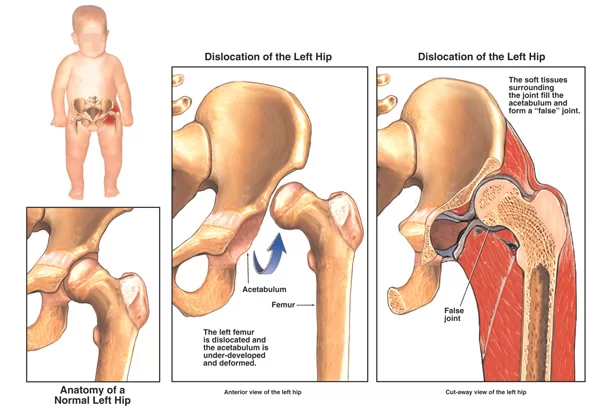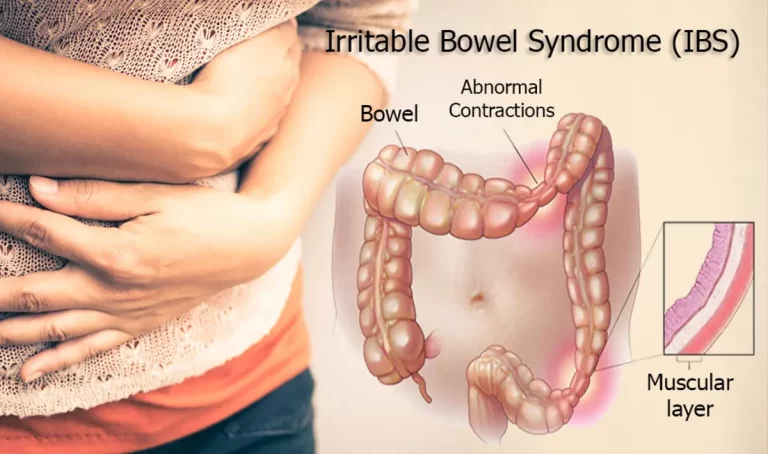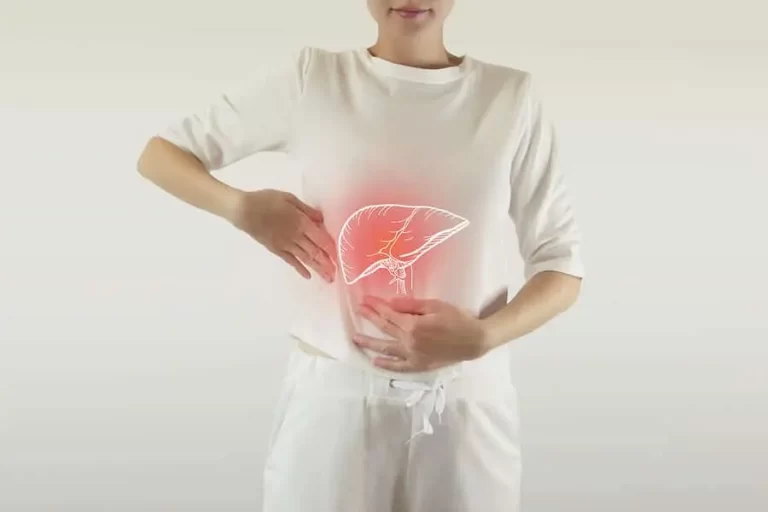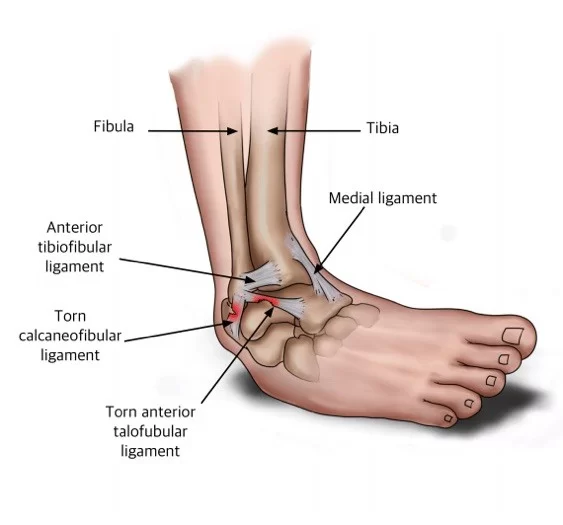Understanding Abdominal Cramps During Pregnancy
Pregnancy is a miraculous journey characterized by numerous physical and emotional changes in a woman’s body. While it’s often an exciting time, it can also bring about discomforts and challenges, one of which is abdominal cramps. Abdominal cramps during pregnancy are a common occurrence and can vary in intensity and frequency.
Introduction
- Pregnancy is frequently accompanied by cramps or discomfort in the stomach.
- While they normally don’t require concern, occasionally they may indicate a more serious issue that should be investigated.
- If the pain is minor and goes away when you move, rest, urinate, or pass wind, there’s generally no need to be concerned.
- Therefore, give your midwife or the maternity hospital a call if you are concerned about stomach aches.
- Pregnancy-related upper abdominal pain may be a typical aspect of the changes your body goes through to make room for your developing baby.
- Although there are numerous innocuous reasons for this stomach ache, some might be more dangerous.
- Expectant mothers must educate themselves on all possible reasons to identify symptoms that could raise concerns.
Causes of Abdominal Pain During Pregnancy
- During pregnancy, innocuous stomach pain can arise from various causes such as constipation or pain in the round ligament.
- Nevertheless, you should see your gynecologist if the pain persists or feels severe, or if you have any concerning signs like blood or severe cramping.
Round Ligament Pain:
- This type of pain can be described as either an aching, dull, or chronic discomfort, or as a sharp stabbing pain that happens when you shift positions.
- The two huge ligaments that extend from your uterus to your groin are the source of round ligament pain. These ligaments become stretched when the uterus expands, causing pain.
- Usually reported in the second trimester, this ache is thought to be benign.
- The circular ligaments may expand as the uterus grows during pregnancy—”two large ligaments that run down into the groin from the front of the uterus,
- Round ligament pain usually affects one side of the belly, but it can affect both, and usually begins between weeks eighteen and twenty-four (about when many pregnant women begin “showing”).
- It could hurt in your lower abdomen and travel to your groin. It normally lasts for a few seconds at a time and can be either dull and achy or sharp and piercing.
- Any activity that causes these ligaments to strain, such as laughing, sneezing, coughing, or abruptly standing up, might cause it.
- Although round ligament pain typically goes away on its own, if it’s causing you a great deal of discomfort, consult your gynecologist for advice.
Gas and constipation
- Gas and constipation are common side effects of pregnancy.
- Food passes through your gastrointestinal tract more slowly when you’re pregnant because progesterone, a hormone that rises during pregnancy, slows down the entire system.
- To combat constipation, drink plenty of fluids and eat fiber-rich food.
- Reducing gas can be achieved by avoiding items that cause gas, such as dairy products, spicy and fried foods, bubbly drinks, and vegetables like beans, cabbage, and onions.
Contractions of Braxton Hicks
- During Braxton Hicks contractions, the uterine muscle periodically contracts and relaxes. They are also known as prodromal or “false labor” pains at times.
- Although they are said to begin at six weeks gestation, most women do not experience them until the second or third trimester of pregnancy.
- The body uses Braxton Hicks contractions as a means of They do not, however, signal the onset of actual labor or its impending commencement.
- Contractions known as Braxton Hicks are a typical aspect of pregnancy.
- They are not painful, even if they could be uncomfortable.
- Women say that Braxton Hicks contractions feel like intermittent, mild menstruation cramps or a constriction in a particular location of the abdomen.
- True labor contractions can be distinguished from Braxton Hicks contractions.
- Braxton Hicks contractions are more uncomfortable than painful, irregular in length and intensity, sporadic, erratic, and non-rhythmic.
- Braxton Hicks contractions do not become more frequent, longer, or more intense than real labor contractions.
- Furthermore, they diminish and eventually vanish, only to resurface at a later date.
- The frequency and strength of Hicks contractions tend to rise as the pregnancy approaches its conclusion.
- Braxto-Hicks contractions are frequently confused by women for actual labor.
- Contrary to actual labor contractions, Braxton Hicks contractions do not result in cervix dilation or delivery.
Ectopic Pregnancy
- A pregnancy issue known as ectopic pregnancy occurs when the embryo attaches itself outside of the uterus.
- Abdominal discomfort and vaginal bleeding are the traditional signs and symptoms, however less than half of the affected women experience both.
- One could characterize the discomfort as acute, dull, or cramping. If there has been bleeding into the abdomen, pain may also radiate to the shoulder.
- Severe bleeding may cause shock, fainting, or a rapid heartbeat. Except in extremely rare cases, the fetus cannot live.
- Worldwide, less than 2% of pregnancies are affected by ectopic pregnancies each year.
- A history of infertility, tobacco use, previous tubal surgery, pelvic inflammatory illness, which is frequently caused by chlamydia infection, and the use of assisted reproductive technologies are risk factors for ectopic pregnancy.
- Those who have experienced an ectopic pregnancy in the past are considerably more likely to do so again.
- The majority of ectopic pregnancies (90%) take place in the fallopian tube, which is referred to as tubal pregnancies.
- However, implantation can also happen on the cervix, ovaries, abdominal wall, or cesarean scar.
- The most common methods used to identify ectopic pregnancy are ultrasound and human chorionic gonadotropin (hCG) blood tests.
- It might be necessary to test this more than once. Miscarriage, ovarian torsion, and acute appendicitis are other conditions that can cause symptoms similar to these.
- By screening for and treating chlamydia infections, risk factors like these can be reduced.
- Although some ectopic pregnancies end in miscarriage without medical intervention, the most common treatment for ectopic pregnancy involves removing the embryo from the fallopian tube or the fallopian tube in its whole.
- In certain situations, methotrexate drug therapy is just as effective as surgery. In particular, it functions best when the ectopic is tiny and the beta-HCG is low.
- If the woman’s vital signs are unstable, there is a fetal heartbeat, or the tube has burst, surgery such as a salpingectomy is still usually advised.
- A laparotomy, or bigger incision, may be used for the surgery instead of a laparoscopy. Treatment lowers maternal mortality and morbidity.
- In affluent nations, the incidence of ectopic pregnancy ranges from 11 to 20 per 1,000 live births, with a potential higher rate of up to 4% among women who use assisted reproductive technology.
- It is the leading cause of death for females during the first trimester, accounting for between 6–13% of the whole.
- Results have improved in the industrialized world, while poverty is still a common occurrence in the developing world.
- In the developed world, the danger of dying is between 0.1 and 0.3 percent, whereas in the underdeveloped world, it is between 1 and 3 percent. Al-Zahrawi wrote the first recorded account of an ectopic pregnancy in the eleventh century. “Out of place” is how “ectopic” is defined.
- Before 24 weeks of pregnancy, cramping pains and blood may indicate an impending miscarriage or miscarriage danger (when bleeding occurs but the pregnancy progresses normally).
Before eclampsia
- Because of the expanding baby and uterus pressing up under the ribs, pain just beneath the ribs is frequent in later pregnancy.
- However, severe or ongoing pain, especially on the right side, may indicate pre-eclampsia, which is a condition when pregnant women have elevated blood pressure.
- Usually, it begins around the time of the baby’s birth or after 20 weeks.
- When frequent contractions cause your cervix to open after week 20 but before week 37 of pregnancy, this is known as preterm labor.
- Premature birth can be caused by preterm labor. The previous early the higher the chances are for your baby’s health when delivery occurs.
- The newborn intensive care unit must provide extra care for a large number of premature babies, or preemies. Long-term physical and mental impairments can also occur in premature infants.
- Often, the precise cause of premature labor remains unclear. Preterm labor may be more likely in some cases due to recognized risk factors, but it can also happen in pregnant women who have no known risk factors.
Sudden stoppage of the placenta
- During pregnancy, your placenta gives your unborn child oxygen and nourishment.
- It normally implants high on the uterine wall and isn’t removed until after the baby is born.
- However, a condition known as placental abruption can occur when the placenta separates from the uterine wall before delivery in extremely rare circumstances (about 1 in 200 births).
- This risky side effect of pregnancy is most typical with the third pregnancy.
- You may suffer dark, red vaginal bleeding without clots, and your uterus may become rock hard (it won’t indent when you press on the abdomen).
- When a pregnant woman’s placenta separates during labor, her gynecologist will typically perform an emergency C-section to deliver the baby.
- A doctor may decide to induce labor for a vaginal delivery or to let the pregnancy continue if the abruption is minor.
- Individuals with a history of placental abruption, high blood pressure, preeclampsia, and abdominal trauma are among those who are susceptible to this illness.
Pre-eclampsia
- High blood pressure and protein in the urine are signs of preeclampsia, which can appear after 20 weeks. For this reason, your doctor takes your blood pressure at each visit.
- The baby’s growth may be delayed by high blood pressure because it narrows the uterine veins that provide the fetus with nutrition and oxygen.
- Placental abruption is another risk factor associated with preeclampsia.
- Severe preeclampsia in expectant parents can also include headaches, nausea, edema, upper right abdominal pain, and vision abnormalities like flashing lights.
Urinary tract infection (UTI)
- Pregnant mothers may experience urinary tract infections (UTIs) in as many as 13% of cases.
- Common signs of a UTI include bloody urine, discomfort or burning when urinating, and an unexpected urge to urinate. However, some patients also report stomach pain. The issue with urinary tract infections (UTIs) during pregnancy is that they have the potential to develop into kidney infections, which raises the possibility of preterm labor.
- Appendicitis occurs when the appendix pulls up and becomes close to the liver or belly button as the uterus grows. That unusual presentation throws us for a loop.” In addition, a possible delay in diagnosis increases the possibility of consequences.
- While lower right quadrant abdominal pain is the typical sign of appendicitis, pregnant women may have discomfort further up in the abdomen. Other signs and symptoms include nausea, vomiting, and appetite loss.
Gallstones
- Women are more likely than men to get gallbladder stones, particularly if they are overweight, over 35, or have a history of gallstones.
- Gallstones affect about 8% of expectant parents3. Surgery may be necessary as part of the treatment, though it is occasionally delayed until after birth, depending on the severity of the symptoms.
- Gallstones, commonly known as cholecystitis, cause intense, localized abdominal discomfort in the upper right quadrant. Under your right shoulder blade and around your back, the pain may occasionally spread.
Symptoms
Fatigue
- During pregnancy, you could feel so exhausted that you can’t function normally. It makes sense that you’re tired considering all the extra work your body is putting in.
- The first trimester and the latter few months of pregnancy are when fatigue is most common.
- Energy levels typically increase in the middle.
- Fatigue may occasionally indicate anemia or low red blood cell counts.
- Pregnancy-related anemia may indicate insufficient intake of iron, folic acid, or vitamin B12.
- You can get pica symptoms, or the want to eat things that aren’t food, like ice, paper, or dirt, if your iron levels are low.
Headaches
- Pregnancy-related headaches are frequent, particularly during the first trimester when the most significant hormonal changes occur.
- The rise in your blood pressure is among the other causes.
- volume, the strain of acclimating to pregnancy, and even inadequate hydration or sleep.
Vomiting and nausea
- Even though it’s known as morning sickness, you can get uncomfortable at any time of day and prepare yourself to throw up.
- In the first trimester, morning sickness affects up to 70% of expectant mothers. Before the second trimester, when your body adjusts to changing hormones, it usually disappears.
- If your extreme nausea and vomiting are keeping you from getting the nutrients and hydration your body needs, get in touch with your healthcare professional.
- You may have anxiety gravidarum, a condition that needs to be treated specifically and is far more serious than morning sickness.
Breast changes
- As your breasts prepare to provide milk for a newborn, they may enlarge and become sensitive or sore. As early as weeks six through eight of pregnancy, this can occur.
- Your nipples may color and you may see bluish veins as your blood supply increases.
- Your breasts may start to leak colostrum, a clear fluid, as early as the second trimester. These alterations are typical.
Anguish and distress
- Your ligaments become more pliable due to pregnancy hormones that help your body prepare for the growing fetus.
- Additionally, the flexibility permits your bones to enlarge during birthing. You are also bearing the extra weight of the fetus at the same time.
- When combined, these factors might cause physical strain and pain.
Varicose and swollen veins
- The expanding fetus’s pressure can your blood arteries, causing the blood flow to slow down. This might cause swelling (edema) in your legs and feet.
- Your legs may have enlarged or swollen veins as a result of the delayed circulation.
- Pregnancy-related varicose veins typically first show around the second trimester and become more noticeable as the fetus develops.
- Usually, they become better after having a child.
How to Reduce Pain in the Abdomen During a Pregnancy?
- Naturally, the path of treatment will depend on the underlying cause of the pain, but these suggestions may be helpful.
- Modify your movement, particularly if you’re having pain in your round ligaments. Try sitting down and rising more gently, for instance, and try not to spin around abruptly at the waist.
- Select meals high in fiber, such as fruits, vegetables, and bran.
- Sip a lot of water.
- Consume small meals frequently.
- Regular exercise, moderate intensity, and doctor approval are all recommended.
- Regularly empty your bladder
- For relief, try yoga, acupuncture, or prenatal massage.
- Take regular breaks.
HELLP syndrome
- The three main components of HELLP syndrome are low platelets, increased liver enzymes, and hemolysis. It’s a potentially fatal pregnancy condition.
- Although the exact origin of HELLP is unknown, some women who have been diagnosed with preeclampsia also acquire the illness.
- Of the 5 to 8 percent of American women who develop preeclampsia, the Preeclampsia Foundation estimates that 15 percent will develop HELLP.
- Women who do not have preeclampsia may get this syndrome as well. HELLP is more prevalent among first-time mothers.
- Abdominal pain in the right upper quadrant is a sign of HELLP. Malaise, exhaustion, and headaches are some more symptoms.
- vomiting and nausea fuzzy vision
- elevated blood pressure edema
- bleeding
- If you have any of these other HELLP symptoms in addition to stomach pain, get immediate medical advice.
- If HELLP is not treated right away, it may lead to dangerous complications or possibly fatality
Diagnosis
- Imaging can speed up diagnosis and provide clarity in a clinically unclear picture. Because ultrasound is readily available, portable, and emits no ionizing radiation, it is frequently utilized as the first diagnostic imaging method during pregnancy.
- Abdominal pain is frequently diagnosed by ultrasound, especially if it is brought on by a gynecologic or obstetric problem.
- However, due to the patient’s body habitus, a narrow field of view, and the presence of covering tissues, examination of the colon, pancreas, ureters, and mesenteric vasculature may be limited on ultrasound.
- Evaluation of the pancreatic, colon, and mesenteric arteries may be particularly hampered by air in the intestine.
- Because MRI doesn’t emit ionizing radiation, it’s a helpful imaging method for expectant patients.
- Numerous recent studies have demonstrated the value of MRI in assessing pregnancy-related stomach discomfort, particularly while evaluating a patient for appendicitis, which is the most frequent cause of an acute abdomen during pregnancy.
- There have been no reports of harmful effects on the developing fetus from MRI exposure yet.
- As a result, there is no particular recommendation for MRI in the first, second, or third trimester.
- The availability of the institution and the radiologists’ level of competence may influence the use of MRI in the assessment of abdominal discomfort during pregnancy.
- The routine use of gadolinium during pregnancy is not recommended by a recent American College of Radiology (ACR) guidance paper for safe magnetic resonance imaging (MR) procedures.
- It is known that MR contrast agents based on gadolinium cross the placenta and enter the fetal blood.
- The fetal kidneys then discharge the contrast substance into where the agent may stay for an unforeseen period: the amniotic fluid.
- Large-scale, well-monitored studies have not yet been conducted to confirm whether maternal gadolinium injection causes harmful fetal consequences, or not.
- As a result, it is unknown what risks the fetus would face. Many causes of stomach pain during pregnancy can also be accurately diagnosed by ionizing radiation examinations, particularly CT scans.
- When examining a pregnant or potentially pregnant patient that involves ionizing radiation, a risk-benefit analysis is especially necessary.
- However, most ionizing radiation-based diagnostic imaging procedures don’t expose the fetus to enough radiation to cause neurologic or developmental abnormalities.
- Therefore, if the research is in the mother’s best interest and the patient is aware of the small and unknown risks to the unborn, ionizing radiation exams can still be provided to expectant mothers.
- Everyone agrees that the initial radiological modality to assess an acute abdomen in a pregnant woman is ultrasonography (USG).
- Because it is readily available, portable, and does not emit any ionizing radiation, it is the preferred imaging method throughout pregnancy.
- When used to diagnose appendicitis and cholecystitis—two major non-obstetric causes of acute abdomen during pregnancy—it has a high sensitivity and specificity.
- However, because of technical challenges brought on by the mechanical impacts of the growing uterus, the effectiveness of USG may diminish after the 32nd week of gestation.
- Because of the overlaying structures, a proper assessment of the pancreas, colon, and ureters may be compromised by the limited field of view.
Treatment
Medical Treatment
- Within hours or days, mild abdomen pain may go away on its own.
- Medications obtained from pharmacies are frequently useful in managing minor pain and the symptoms that go along with it.
- You can ask your pharmacist for advice on the kind of product that will work best for you.
- Other than period discomfort, you shouldn’t use aspirin or anti-inflammatory drugs like ibuprofen to alleviate stomach pain. These medications may aggravate or induce gastrointestinal or stomach issues.
- If you’re treating moderate stomach discomfort at home with a recognized cause:
- hydrate well by consuming clear liquids; Limit tea, coffee, and alcohol.
- Stay hydrated and use a hot water bottle or wheat pack on your stomach.
- When you can resume eating, consume bland foods, or as your physician has instructed
- Depending on what is causing your stomach discomfort, you may need to try one of the following specific treatments:
- Gas: Over-the-counter medications that are intended to disintegrate gas bubbles include antacids including simethicone. For persistent wind issues, gas-reducing medications, including charcoal products, may be helpful. Dietary adjustments might also be beneficial. You can speak with your physician or an Accredited Practising Dietitian (APD) for nutritional recommendations.
- Gastroenteritis: This normally subsides on its own within a few days. Getting plenty of clear water to rehydrate is the most crucial course of treatment.
- Pain brought on by muscular spasms: Antispasmodic medications can help reduce intestinal wall spasms. Talk to your doctor or pharmacist about the options that are best for you out of the ones that are available.
- Acid reflux disease (GERD) pain can be controlled by altering your lifestyle, taking certain medications, or both to reduce the amount of acid in your stomach.
- Pain resulting from duodenal or stomach ulcers: This kind of pain is typically treated by attempting to heal the ulcers, which will reduce the associated symptoms.
- This may mean following your doctor’s instructions and using antibiotics and drugs that reduce stomach acid.
- Ulcerative colitis and Crohn’s disease are examples of inflammatory bowel illness
- A variety of medications can be used to treat these diseases during flare-ups and can also be taken consistently to stop flare-ups in the future.
- Abdominal discomfort can have numerous underlying reasons, and if the cause is identified, your doctor can guide the best course of action.
- In certain instances, such as If the patient has intestinal obstruction or appendicitis, they can require emergent surgery.
- The following categories of medications may be suggested to relieve stomach pain:
- antispasmodics
- preventative measures for diarrhea
- laxatives
- antiemetic medications
- anti-flatulence medications
- antibiotics and antacids
Physiotherapy Treatment
Pelvic Tilts
- Pelvic tilts include lying on your back with your feet flat on the ground and your legs bent.
- Flatten your back against the floor by tensing your abdominal muscles and raising your pelvis.
- Take a few moments to hold, and then let go.
- Repeat many times.
Cat-Cow Stretch
- Begin on your hands and knees in the tabletop position.
- Take a breath, arch your back, and lower your belly to the floor to form the cow stance.
- Breathe out, turn your back, and tuck your chin into your chest to assume the cat stance.
- Take several deep breaths and repeat this soft, flowing motion.
Exercises for Kegels
- Contract and release the muscles of the pelvic floor.
- After a brief period of holding, release.
- Repeat multiple times in the day.
Gentle Stretching:
- Don’t do any abrupt movements when stretching your hips and lower back.
- or abrupt motions.
- Think about doing yoga for pregnant women or other low-impact activities that emphasize relaxation and flexibility.
Deep Breathing
- To assist relax your abdominal muscles, practice deep, diaphragmatic breathing.
- Take a deep breath through your nose while diaphragmatic breathing.
- Breathe out slowly through your lips.
Conclusion
In conclusion, abdominal cramps during pregnancy are usually a typical part of the journey, while they can be alarming at the same time. Pregnant women must, however, remain aware and seek medical assistance if the cramps are severe, persistent, or accompanied by other symptoms.
Mothers-to-be can negotiate this part of pregnancy with confidence and peace of mind, protecting their babies’ and their own health, by learning the causes and management options outlined.

